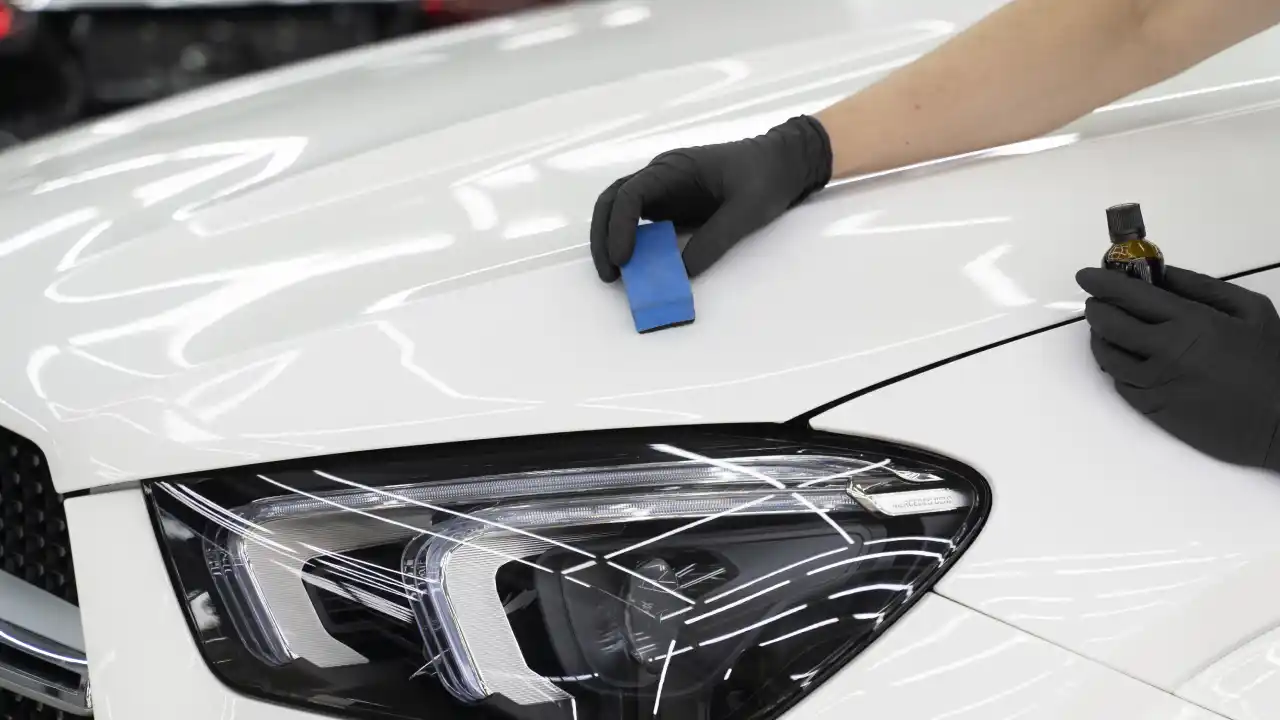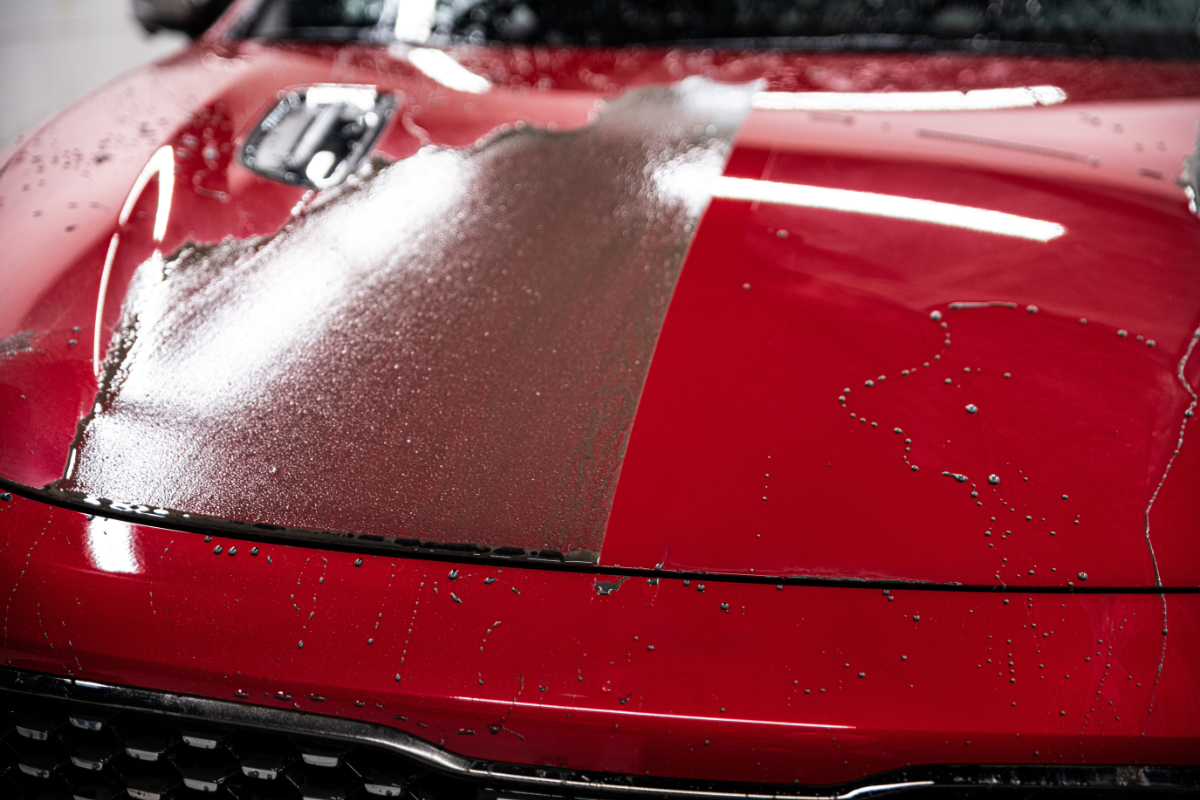Ceramic Coating vs. Sealants: Comprehending the Differences for Your Cars and truck
Ceramic Coating vs. Sealants: Comprehending the Differences for Your Cars and truck
Blog Article
The Value of Ceramic Coating: Shielding Your Automobile's Outside With Accuracy
In an age where preserving the aesthetic and useful stability of your automobile is extremely important, ceramic coating emerges as an essential option. This protective layer not only guards against environmental misfortunes but also boosts the visual charm of your cars and truck. With its unique bonding residential or commercial properties, ceramic coating supplies a degree of defense that much surpasses standard waxing approaches. Just how specifically does it accomplish such impressive outcomes? As we check out the subtleties of its application and contrast it to other options, one can not question but aid concerning the specifics that make this modern technology vital for modern-day automobile treatment.
Advantages of Ceramic Coating
When it comes to preserving an automobile's aesthetic allure, ceramic coating offers substantial benefits. By developing a semi-permanent bond with the car's paint, ceramic coverings properly protect against oxidation and fading, making certain that the cars and truck preserves a glossy, showroom-like coating for an extended period.
Along with its safety qualities, ceramic coating supplies impressive hydrophobic homes, causing water and various other liquids to bead off easily. This function streamlines the cleaning process, as dust and particles are less likely to stick to the surface, lowering the regularity and effort needed for maintenance. The covering's resistance to chemical discolorations from acidic contaminants like bird droppings and tree sap is an additional noteworthy benefit, lessening possible paint damages.
Ceramic finishes also improve scrape resistance, supplying a layer that can absorb minor abrasions and swirl marks. This feature is particularly valuable in keeping a beautiful surface area, reducing the possibility of noticeable blemishes and preserving the integrity of the cars and truck's paintwork over time.

How Ceramic Covering Functions
Comprehending the technicians behind ceramic covering discloses its effectiveness as a protective service for cars. Ceramic finishings are essentially liquid polymer applications that chemically bond with an automobile's factory paint, creating a safety layer.
Application of ceramic covering entails a careful process. This shield enhances the cars and truck's gloss and hydrophobic homes, promoting simpler cleansing by causing water and pollutants to grain and slide off easily.
Additionally, the coating's molecular structure gives resistance to minor scratches and chemical discolorations. Unlike waxes or sealants that sit on top of the paint, ceramic finishes incorporate with the surface area, offering resilient protection. This assimilation is fundamental to its effectiveness, making sure the vehicle's finish stays beautiful for several years.
Contrasting Ceramic Coating to Alternatives
In the realm of vehicle security, ceramic finish stands as an awesome alternative when contrasted to typical choices such as waxes and sealers. While waxes provide a momentary lustrous finish, generally lasting just a couple of weeks to months, ceramic finishings provide a longer-lasting option, frequently sustaining for years. This longevity is attributed to the chemical bonding that occurs when read the full info here ceramic coverings are applied, forming a solid layer that is immune to ecological risks.
Contrastingly, sealants, although even more durable than waxes, still disappoint the robust defense used by ceramic finishings. Sealants can normally last for as much as a year, offering a synthetic guard against certain components. However, they do not have the remarkable hydrophobic properties and UV defense that ceramic finishes provide.
Additionally, ceramic coatings provide enhanced scratch resistance, which neither waxes neither sealers can effectively match. In summary, while conventional waxes and sealers supply basic security, ceramic finishes offer a comprehensive, long-term service that substantially enhances and preserves the car's outside surface.
Application Process Clarified
Applying ceramic finish to a lorry requires a meticulous process to make sure optimum outcomes and longevity. The first action entails extensively cleaning the vehicle's surface to remove dust, oil, and previous waxes. This is critical for ensuring the coating sticks appropriately. A pH-neutral hair shampoo and a clay bar treatment are typically made use of to achieve an immaculate surface area. As soon as cleaned up, the vehicle is dried and polished to get rid of any type of imperfections, as any existing scrapes or swirls can become much more pronounced after the covering is used.
Complying with surface prep work, the application of the ceramic covering starts. The layer is typically applied in a climate-controlled setting to avoid dirt bits from choosing the newly cleaned surface. Using an applicator pad, the ceramic finish is applied in little areas to guarantee also insurance coverage. It is important to follow the supplier's guidelines relating to the appropriate treating time and application density.
After application, the coating requires a details curing period, throughout which the lorry should be safeguarded from water and contaminants. This look at this now treating procedure can vary depending upon the item yet usually varies from 24 to 48 hours. Eventually, this thorough procedure is pivotal in achieving a glossy and durable coating.
Upkeep Tips for Long Life
To maintain the longevity of a ceramic covering, adherence to a disciplined maintenance routine is vital. Routine cleaning is vital; make use of a pH-neutral automobile hair shampoo and soft microfiber gloves to stay clear of abrasions. Stay clear of automated cars and truck cleans, as their severe brushes can endanger the layer's honesty. Rather, go with a hand clean to make certain thorough yet mild cleansing.
Post-wash, drying the vehicle with a tidy microfiber towel stops water areas that may weaken the finish gradually. Furthermore, apply a ceramic coating booster every couple of months. These boosters strengthen the hydrophobic residential or commercial properties and enhance the coating's safety abilities, ensuring it continues to be reliable versus pollutants.
Remember that auto parking places play a critical duty in maintenance. ceramic coating. Whenever feasible, park in shaded areas to minimize UV exposure, which can progressively deteriorate the finishing. For lasting storage, official source consider utilizing an automobile cover for added security versus environmental components
Final Thought
In conclusion, ceramic layer serves as a crucial protective layer for lorry exteriors, using long-lasting protection against environmental aspects such as uv, gunk, and dust rays. Recognizing the application process and adhering to upkeep suggestions are necessary for taking full advantage of the longevity and effectiveness of ceramic finish.
When it comes to preserving an automobile's aesthetic appeal, ceramic finishing uses substantial benefits. By developing a semi-permanent bond with the automobile's paint, ceramic finishes effectively prevent oxidation and fading, making certain that the auto keeps a shiny, showroom-like coating for an extensive duration. Ceramic coverings are basically liquid polymer applications that chemically bond with a cars and truck's manufacturing facility paint, developing a protective layer. In recap, while standard waxes and sealers use basic security, ceramic finishes provide an extensive, lasting option that considerably maintains the automobile and enhances's outside surface.

Report this page